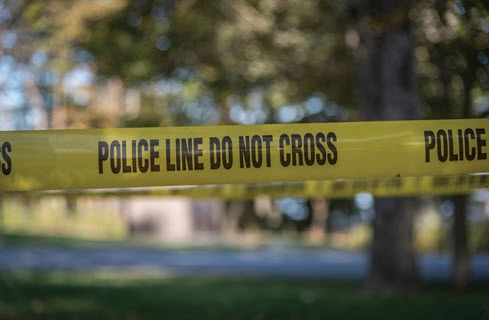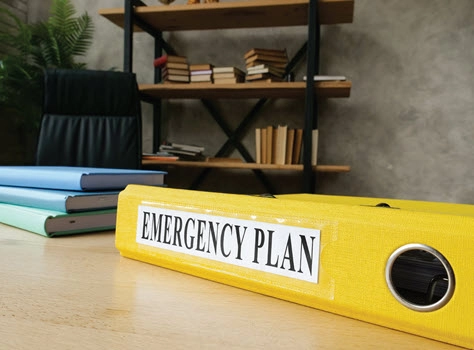Include Active Shooter Scenarios in Your Emergency Preparedness
‘Shelter in place’ plans may be a crucial tool. Gun violence happens in many places in the United States, including nursing homes. Nursing homes should include active shooter scenarios in their emergency preparedness plans. “Most HCFs practice evacuation drills for fires and take protective measures for tornadoes, but far fewer HCFs practice for active shooter incidents. To be prepared for an active shooter incident, training and exercises should include what to expect and how to react,” says the resource guide “Incorporating Active Shooter Incident Planning into Health Care Facility Emergency Operations Plans.” The resource guide was compiled by several federal government agencies, including the U.S. Department of Health and Human Services (HSS), U.S. Department of Homeland Security (DHS), U.S. Department of Justice (DOJ), Federal Bureau of Investigation (FBI), and the Federal Emergency Management Agency (FEMA). Many facilities’ emergency preparedness plans already include guidelines for when and how to “shelter in place.” Many states recommend that long-term care facilities consider a shelter-in-place option for situations that involve an active shooter. Planning Is Preparation Experts say that active shooter scenarios escalate rapidly, so knowing exactly what to do is crucial, rather than trying to make major decisions in the moment. Many states offer resources for nursing homes to use to prepare for active shooter scenarios, which staff can incorporate into their emergency preparedness plans. The Nursing Home Incident Command System (NHICS) breaks down preparation and response into these categories: Basically, you want to be as proactive as possible in preventing situations from occurring in the first place by securing entrances and taking other defensive precautions, but also have the practiced ability to communicate to staff and residents what they should do in such a situation and when they should do those things. Training Is Key The federal government resource guide advises focusing on training staff to act quickly. People experiencing an active shooter situation may not be able to think clearly, so being able to rely on the “muscle memory” of training can be very helpful. Important: With notoriously high turnover rates and staffing levels that already often feel stretched to the limit, adding the responsibility of training for an incredibly stressful situation like this may seem overwhelming. Work with local law enforcement and human resources to figure out how best to incorporate such training into onboarding, as well as continuing education programs. The federal government agency guidance says: “Train staff to overcome denial and to respond immediately. For example, train staff to recognize the sounds of danger, act, and forcefully communicate the danger and necessary action (e.g., “Gun! Get out!”). In addition, those closest to the public address or other communications system, or who are otherwise able to alert others, should communicate the danger and necessary action. “Repetition in training and preparedness shortens the time it takes to orient, observe, and act. Upon recognizing the danger, staff or others must alert responders as soon as it is safe to do so by contacting 911 with information that is as clear and accurate as possible.” A major aspect of preparing for an active shooter scenario is delegating which employees are in charge of which responses. The NHICS plan includes specific instructions for the following roles: Obviously, anyone present during an active shooter situation will need to make decisions on some level, but designating specific personnel to plan and execute various tasks will make planning smoother and increase preparedness. However, recent research suggests that active shooter drills can in fact be dramatic, depending on the population involved. “While there is limited proof of the effectiveness of these drills, anecdotal evidence, including many online conversations, increasingly suggests that active shooter drills may be harmful to mental health,” notes a research report, “The Impact of Active Shooter Drills in Schools,” released by Everytown for Gun Safety and the Georgia Institute of Technology’s Social Dynamics and Wellbeing Lab. While the study focused on active shooter drills in elementary, middle, and high schools, people living or working in nursing homes may be similarly vulnerable to feeling traumatized by such drills. Caveat: Although the common mantra for active shooter scenarios — including the information provided by NHICS — is to “run, hide, fight,” residents obviously may not be able to run or hide without assistance. “While personal safety is the primary consideration in any emergency, helping others to safety increases the survivability for all potential victims. Rendering aid can be as simple as rallying likely victims to ‘Follow me!’ or aiding non-ambulatory persons and performing immediate first aid in safer areas. Consideration should be given to children and others who may have difficulty evacuating without assistance,” the federal government says. In these instances, it’s important, when and where possible, to help residents shelter in place. Draw the blinds, shut the lights, silence cell phones, turn off radios and televisions. The federal government resource guide suggests that healthcare staff may be able to move people in wheelchairs out of harm’s way quickly and easily, but that is obviously a determination that should be made by each facility and even each staff member if a situation were to unfold. Find out more about how to plan for various scenarios surrounding the aftermath of an active shooter situation in the next issue of MDS Alert. Resource: Find more information about the active shooter guides here, www.phe.gov/preparedness/planning/Documents/active-shooter-planning-eop2014.pdf and https://asprtracie.hhs.gov/technical-resources/resource/231/incorporating-active-shooter-incident-planning-into-health-care-facility-emncy-operations-plans.


